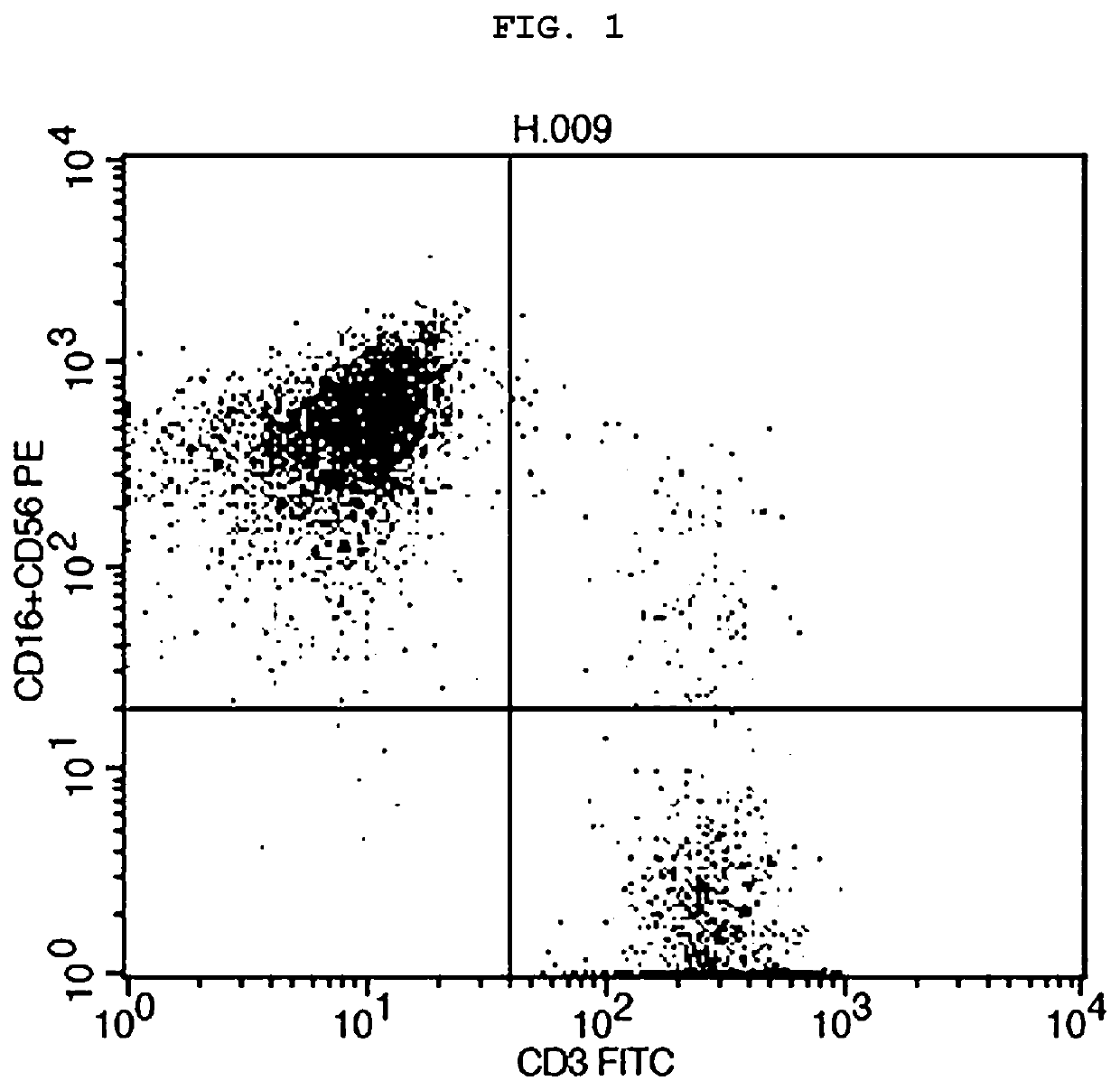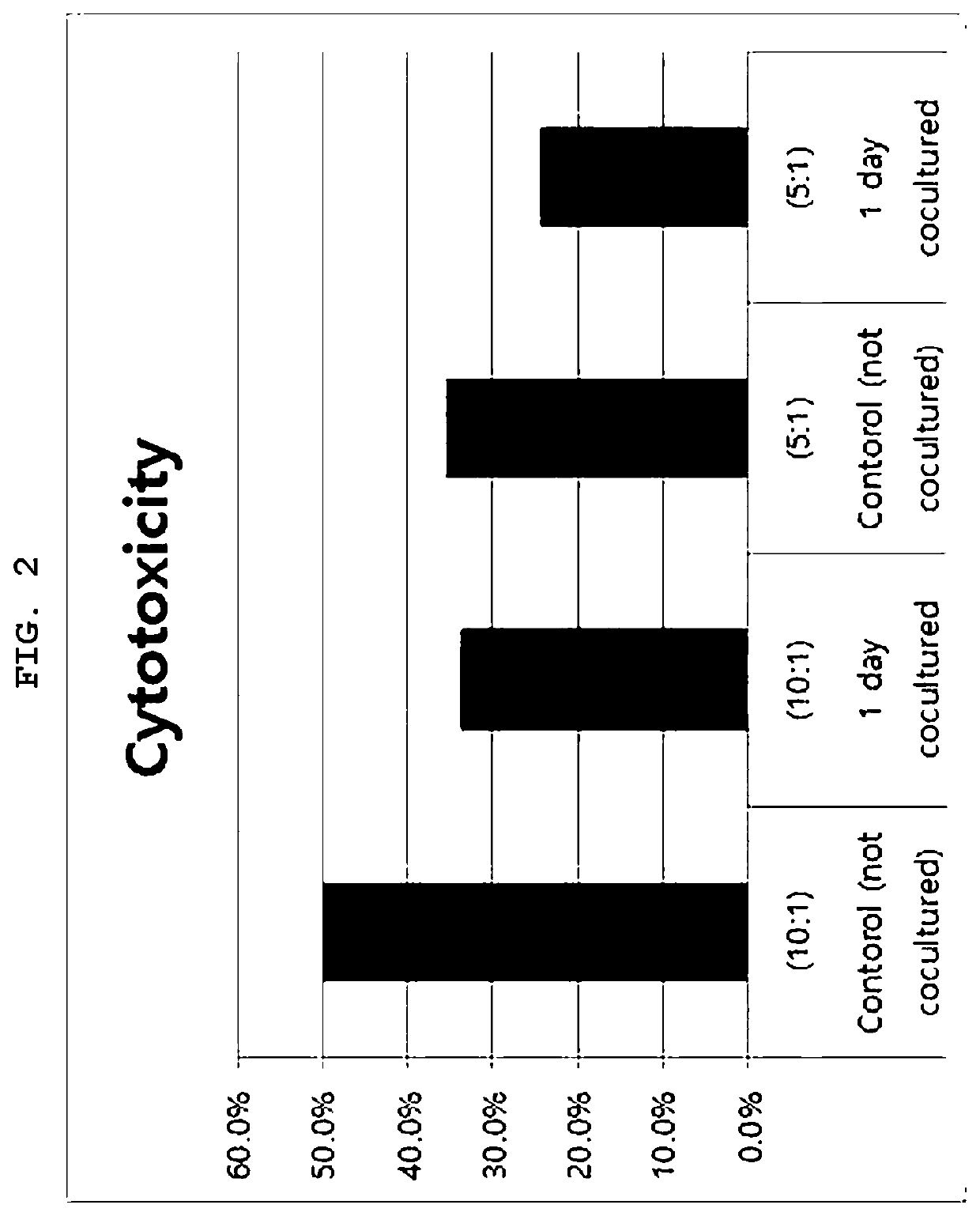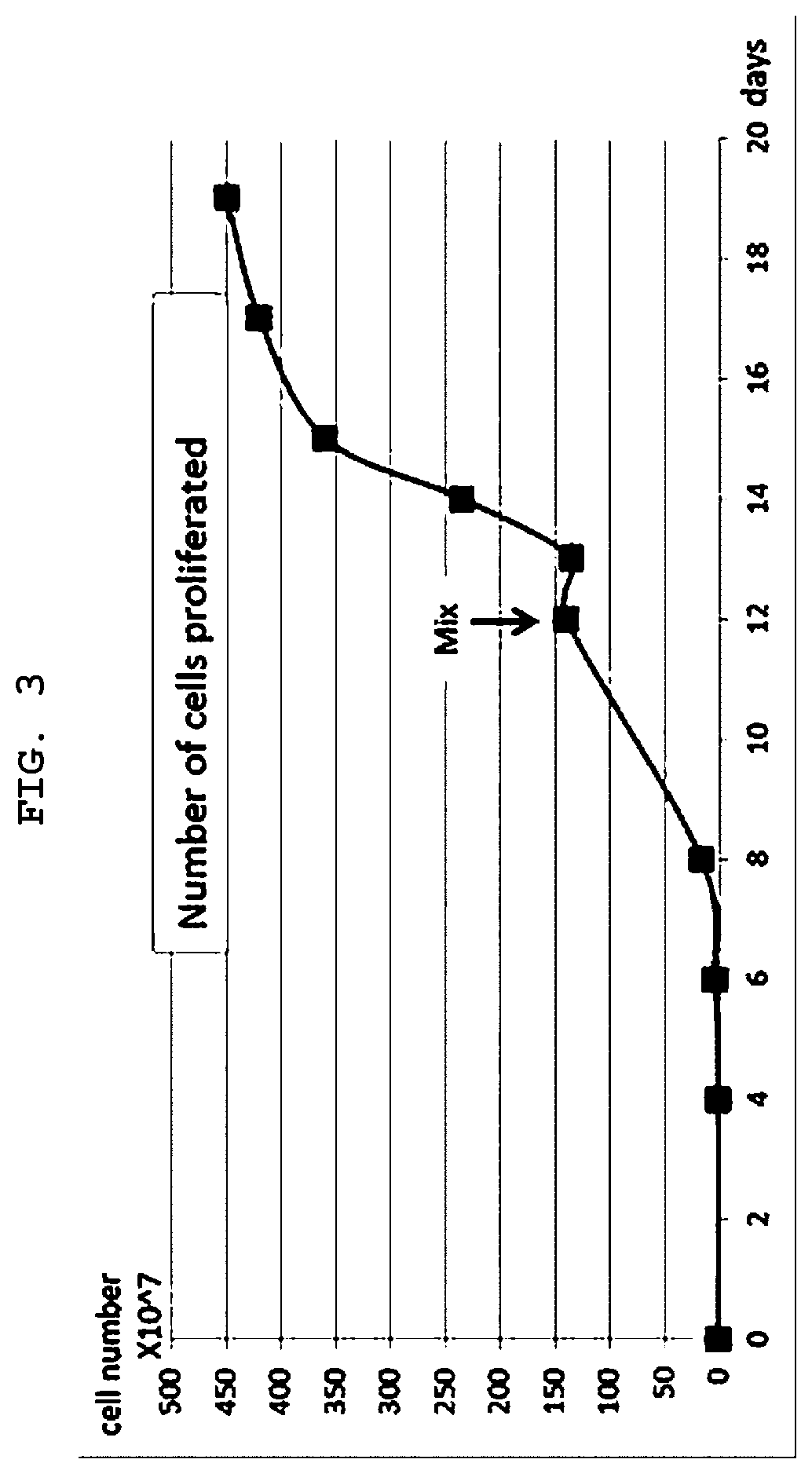Method for culturing allogeneic immune cell, immune cell culture obtained thereby, and immune cell therapeutic agent comprising same
a technology of immune cells and culturing methods, which is applied in the field of culturing allogeneic immune cells, immune cell culture obtained thereby, and immune cell therapeutic agents comprising same, can solve the problems of difficult cell culturing, limited ability to effectively attack cancer cells without immunotherapy, and difficult cell culturing, so as to prolong the life of cells and improve cell proliferation.
- Summary
- Abstract
- Description
- Claims
- Application Information
AI Technical Summary
Benefits of technology
Problems solved by technology
Method used
Image
Examples
example 1
[0055]A first method of culturing an allogeneic immune cell was performed as follows.
[0056]1. Step of Obtaining a First Donor Cell Culture Medium
[0057]First, the blood of a healthy donor was superimposed on a Ficoll-Paque Plus solution having a specific gravity of 1.077 using the property that mononuclear cells such as human lymphocytes or monocytes have a specific gravity lower than 1.077 to perform centrifugal precipitation with a constant centrifugal force. Thereby, according to the difference in specific gravity, separation was performed so that the erythrocyte and granulocyte layer having a specific gravity of more than 1.077 was positioned on the bottom and the mononuclear cell layer and platelets having a specific gravity of 1.077 or less were positioned on the top, thus obtaining a PBMC including lymphocytes. If necessary, it is possible to extract and use only lymphocytes from the PBMC. However, even when the PBMC is cultured without any modification, the same results can b...
example 2
[0065]Culturing was performed for 60 days while performing replacement and harvesting of the medium composition in the same manner as in Table 1 below after obtaining the first mixed culture medium in the same manner as in Example 1, except that the donor's blood and the patient's blood were changed, thereby obtaining a large amount of medium composition.
[0066]On Day 11, the cells in two bags were mixed with each other and then divided into two bags, followed by culturing. Further, the stimulus was changed while the concentration of cytokine in the culture medium was changed at intervals of 3 to 4 days, and culturing was performed while the medium was replaced. The change in the concentration of cytokine may be implemented in a way that repeats the process of from day 8 to day 14 of the NKTM culture process. That is, after culturing was performed under a high concentration of C1 solution, a culture bag including no cytokine was used to perform culturing, and the concentration of cyt...
example 3
[0067]A second method of culturing an allogeneic immune cell was performed as follows.
[0068]1. Step of Obtaining a Second Donor Cell Culture Medium
[0069]The PBMC isolated from the blood of another donor in the same manner as in Example 1 was cultured according to the NKTM culturing method for Day 0 to Day 1, thereby obtaining a second donor cell culture medium. The number of immune cells was 1.2×107.
[0070]2. Step of Preparing a Patient-derived PBMC
[0071]The PBMC isolated from the blood of the patient to whom the immune cell therapeutic agent is to be administered was cultured for Day 0 to Day 14 according to the NKTM culturing method, thus obtaining a patient cell culture medium.
[0072]3. Step of Obtaining a Second Mixed Culture Medium
[0073]The patient cell culture medium was added instead of the D unit to be added to the second donor cell culture medium on Day 2 so that the number of immune cells was 0.8×107 according to the NKTM culturing method, thus obtaining a second mixed cultu...
PUM
| Property | Measurement | Unit |
|---|---|---|
| concentration | aaaaa | aaaaa |
Abstract
Description
Claims
Application Information
 Login to View More
Login to View More - R&D
- Intellectual Property
- Life Sciences
- Materials
- Tech Scout
- Unparalleled Data Quality
- Higher Quality Content
- 60% Fewer Hallucinations
Browse by: Latest US Patents, China's latest patents, Technical Efficacy Thesaurus, Application Domain, Technology Topic, Popular Technical Reports.
© 2025 PatSnap. All rights reserved.Legal|Privacy policy|Modern Slavery Act Transparency Statement|Sitemap|About US| Contact US: help@patsnap.com



